Flowers are an essential decoration during the Tet holiday. However, many types of flowers can cause allergies, so it is advisable to learn more to avoid them.
Types of Flowers That May Cause Allergies During Tet
Symptoms of flower allergies may include headaches, itchy skin or swelling, rashes, nasal congestion, sneezing, itchy eyes, watery eyes, and coughing. Below are some commonly displayed flowers during Tet that contain allergens and may cause skin irritation.
1. Chrysanthemums
During Tet, displaying chrysanthemums symbolizes longevity, good fortune, and prosperity. Chrysanthemums are a symbol of vitality, health, and longevity in East Asian culture, especially in Vietnam. It is believed that placing chrysanthemums in the house during Tet will bring good things to the family in the new year.
However, chrysanthemums contain many allergens, including sesquiterpene lactones. Allergens are produced on the surfaces of the flowers and leaves, often in the form of trichomes (plant hairs), which can easily become airborne.
Contact dermatitis from chrysanthemums often begins on the fingertips (due to picking the flower buds) but can spread to the forearms and face. Sometimes symptoms can persist and are related to the development of chronic dermatitis.
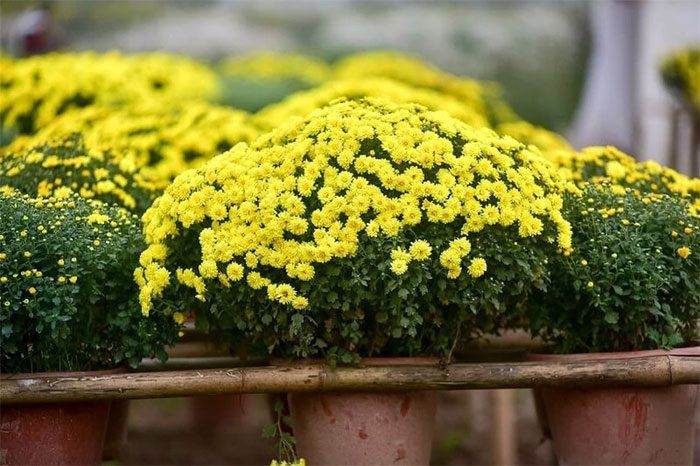
Chrysanthemums contain many allergens that can cause skin rashes. (Photo: Internet).
Contact urticaria has also been reported after contact with chrysanthemums. This itchy rash occurs within minutes of direct contact with the plant and typically resolves within an hour or longer.
2. Lilies
Displaying lilies during Tet in Vietnam represents purity, prosperity, and good luck. Lilies are also seen as symbols of reconciliation, innocence, and freshness. When selecting lilies for home decoration during Tet, Vietnamese people hope that the new year will bring many good things, happiness, and success.
Although most lilies do not have pollen and therefore will not cause pollen allergies, their strong fragrance can trigger migraines or sensitivity to scents, leading to headaches and nausea.
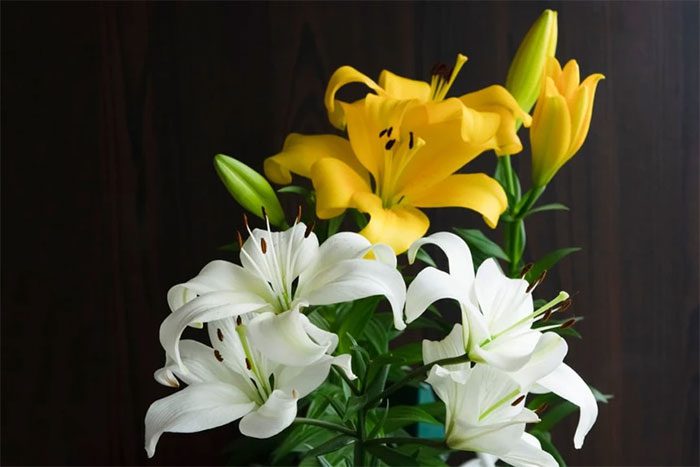
The scent of lilies can cause headaches. (Photo: Internet).
3. Tulips
Displaying tulips during Tet in Vietnam often symbolizes renewal, elegance, and love. Tulips are not a traditional flower in Vietnam’s Tet culture, but due to cultural diversity and the acceptance of new customs, tulips have gradually become popular. The colors of tulips also have distinct meanings: red represents love and passion; yellow symbolizes warmth and happiness; and white signifies purity and new beginnings. Thus, displaying tulips during Tet is also seen as a way to welcome the new year with hopes for a bright and colorful start.
As a beautiful flower with significant meanings during Tet, tulips can also cause allergies. However, tulips are not the source of the allergy; rather, it is their bulbs. Tulip bulb dermatitis typically affects the hands and is characterized by redness, swelling, itching, eczema, and blisters. Fingernails may become brittle and crack. Therefore, you can still choose tulips for your Tet decoration, but avoid using the bulbs.
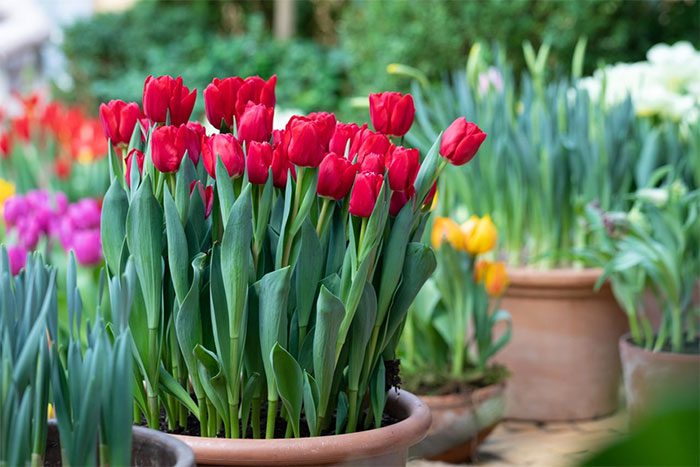
Redness, swelling, itching, eczema, and blisters are symptoms of tulip allergies. (Photo: Internet).
4. Hydrangeas
During Tet, displaying hydrangeas symbolizes wealth, prosperity, and family unity. This flower also represents charm and sublime beauty. Choosing hydrangeas for Tet reflects the desire for a strong, vibrant new year and family reunion.
However, hydrangeas can cause symptoms ranging from skin irritation to poisoning if handled or ingested. Skin rashes from hydrangeas, or dermatitis, can occur upon contact with any part of the plant—though this is rare, and symptoms are typically mild.
A more serious toxic compound found in the leaves, stems, and flowers of hydrangeas is a cyanogenic glycoside known as hydrangin. Hydrangin metabolizes into cyanide in the intestine, causing discomfort that can lead to vomiting, diarrhea, dizziness, difficulty breathing, and weakness if ingested.
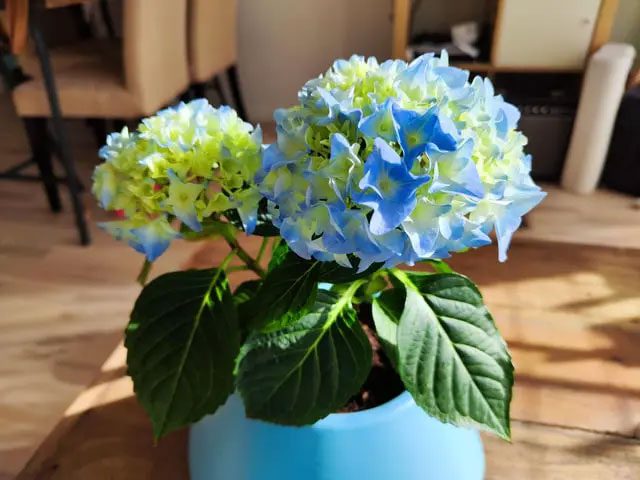
Hydrangeas can cause skin irritation to poisoning if ingested. (Photo: Internet).
5. Daffodils
During Tet, displaying daffodils symbolizes purification, hope, and rebirth. Daffodils typically bloom in the spring, marking the end of winter and the beginning of a new cycle. Vietnamese people believe that daffodils bring luck and freshness to homes and families in the new year.
Although beautiful, yellow daffodils can cause serious allergic reactions, even death. Symptoms include allergic rhinitis, asthma, allergic contact dermatitis, irritant contact dermatitis (from contact with daffodil sap), and urticaria.
This is due to several alkaloids in daffodils, including lycorine and homolycorin. These substances, combined with calcium oxalate crystals, seem to trigger allergic reactions. Yellow daffodil pollen can also cause allergic rhinitis, but the rate is low compared to other types of pollen.

Daffodils can cause allergic rhinitis, asthma, allergic contact dermatitis, and irritant contact dermatitis. (Photo: Internet).
6. How to Safely Display Tet Flowers?
Displaying Tet flowers brings a festive atmosphere to the family and symbolizes wealth, health, and prosperity. Therefore, Tet flowers are essential during this important holiday. To avoid the risk of allergies or toxic reactions from various flowers, you can take the following precautions:
- Choose non-allergenic flowers: Avoid selecting flowers with airborne pollen, such as chrysanthemums, roses, or orchids, if you or family members have a history of pollen allergies.
- Research the flowers: Make sure to thoroughly research each flower before purchasing to ensure they do not provoke allergic reactions in your household.
- Use artificial or dried flowers: This is a safe solution for those allergic to fresh flowers. Artificial or dried flowers do not contain pollen, thus minimizing allergy risks. However, when using artificial flowers, ensure they are cleaned regularly to prevent mold growth.
- Avoid strong-scented flowers: Some flowers with strong fragrances can irritate those sensitive to scents.
- Place flowers in well-ventilated areas: Ensure the flower display area has good airflow to reduce the accumulation of allergens.
- Regular cleaning: Wipe down the surfaces around the flower vases to remove dust and any pollen that may have fallen. Remove wilted or damaged flowers, as they can increase the risk of bacteria and mold growth, which may trigger or worsen allergy symptoms in sensitive individuals.
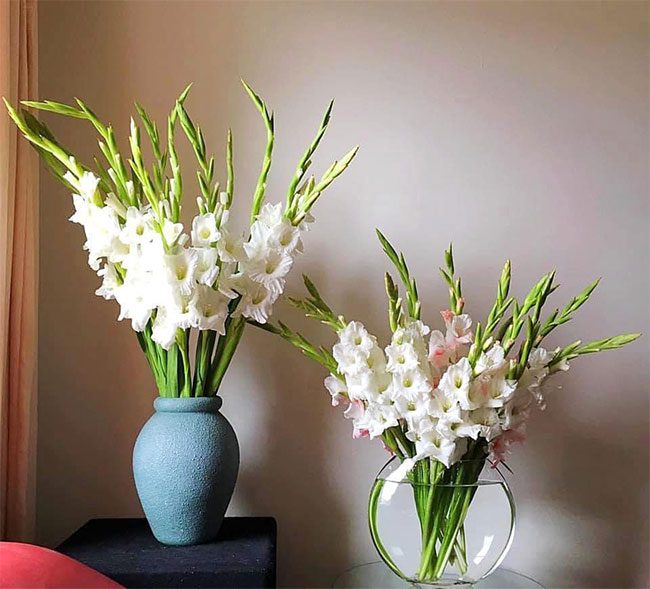
If you are prone to allergies, when choosing Tet flowers, avoid those with strong scents and place them in well-ventilated areas. (Photo: Internet).
7. Treatments for Flower Allergies
If you experience respiratory allergy symptoms like nasal congestion, sneezing, coughing, or itchy throat, some treatment options include:
– Medications: Over-the-counter antihistamines, nasal sprays.
– Home remedies:
- Drink herbal teas made from Ginkgo biloba, milk thistle, red clover, nettle, or thyme. These herbal preparations may have anti-inflammatory effects and can help alleviate allergy symptoms. However, it is advisable to consult a doctor to use the correct dosage.
- Rinse your nose with saline solution.
- Use eye drops if you experience itching or watery eyes.
If you experience skin irritation due to contact with flowers, here are some steps you can take to reduce symptoms:
– Immediately cleanse the affected skin area with cool water and mild soap to remove pollen or irritants.
– Avoid touching or scratching the irritated skin, as this can damage the skin and lead to infection.
– Apply a fragrance-free moisturizer to soothe the skin and prevent dryness or peeling.
– Use topical antihistamines such as over-the-counter corticosteroid creams to reduce inflammation and itching.
– If symptoms do not improve or worsen, consult a doctor. The doctor may prescribe stronger medications or suggest other treatment methods.
Most allergy conditions and skin irritations from pollen or flower toxins can be self-treated at home. However, if you experience any signs of a severe allergic reaction, such as difficulty breathing, swelling of the face, or throat, you need to seek emergency medical care immediately.


















































